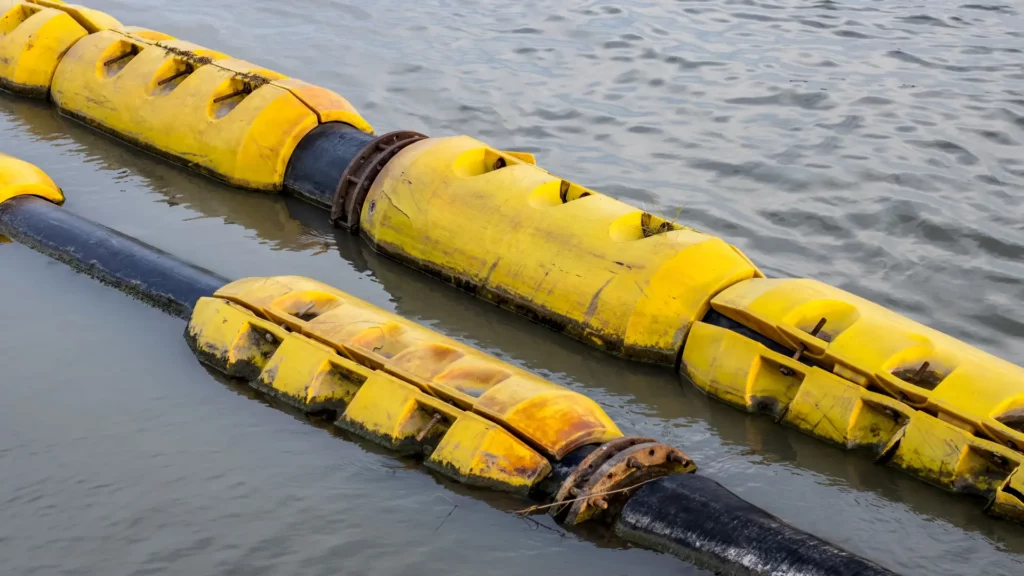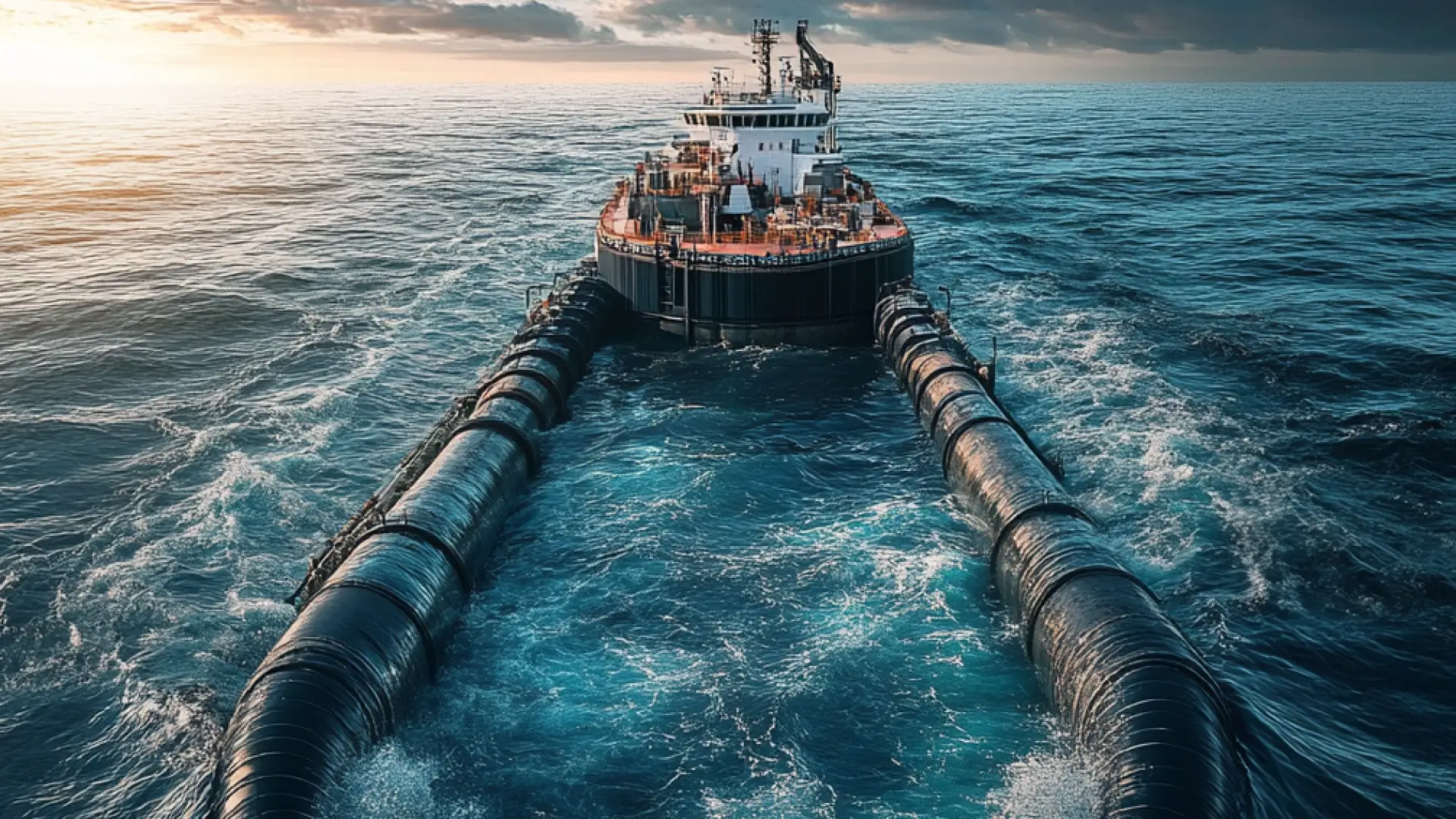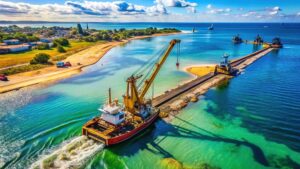Dredging plays a critical role in maintaining the health and functionality of waterways, ports, and coastal infrastructure. It involves the removal of sediment and debris from the bottom of rivers, lakes, and harbors to ensure that these waterways remain navigable and safe for commercial and recreational activities. In addition to infrastructure support, dredging is essential for flood control, beach nourishment, and environmental restoration. However, the environmental impact of traditional dredging practices has increasingly come under scrutiny, sparking demand for more sustainable solutions.
As the world grapples with the effects of climate change and environmental degradation, there is growing pressure on industries to adopt eco-friendly practices. This is particularly true for the dredging industry, where conventional methods are often associated with significant ecological harm. In response, sustainable pipeline technology is emerging as a revolutionary solution. This approach not only improves the efficiency of dredging practices but also minimizes environmental impact, offering a more balanced path forward for the industry.
The Environmental Impact of Traditional Dredging Methods
Traditional dredging practices, while effective in clearing sediment and maintaining waterway depth, can result in significant ecological damage. One of the most pressing concerns is habitat disruption. Dredging often disturbs marine ecosystems, including coral reefs, seagrass beds, and other critical habitats for aquatic species. The mechanical process used in dredging can displace or destroy these habitats, leading to long-term damage to biodiversity and negatively affecting fish populations.
Water pollution is another issue associated with conventional dredging. When sediment is stirred up during the process, it often leads to increased turbidity, which blocks sunlight and hinders photosynthesis in underwater plants. Furthermore, harmful substances, such as heavy metals or toxic chemicals trapped in the sediment, can be released back into the water, compromising water quality and posing risks to aquatic life and human health.
Additionally, traditional dredging practices often rely on diesel-powered machinery, which emits significant amounts of carbon dioxide and other pollutants. These emissions contribute to global warming and reduce air quality, making the need for more sustainable dredging practices all the more urgent.
What is Sustainable Pipeline Technology?
Sustainable pipeline technology represents a major advancement in the field of dredging, designed to address the environmental issues posed by traditional methods. Unlike conventional dredging, which often involves transporting sediment mechanically, this technology uses pipelines to transport dredged material more efficiently and with less ecological disruption.
Sustainable pipeline technology integrates several innovative components aimed at improving both operational efficiency and environmental protection in dredging. These include:
- Energy Efficiency: Sustainable pipeline systems are often powered by electric or hybrid engines, significantly reducing carbon emissions compared to traditional diesel-powered equipment. This transition to cleaner energy sources is critical in reducing the environmental footprint of dredging activities.
- Reduced Sediment Disturbance: By using pipelines to transport sediment, this technology minimizes the disturbance of underwater ecosystems. It prevents the widespread resuspension of particles that can lead to water pollution and habitat degradation.
- Eco-Friendly Materials: The construction of these pipelines and associated dredging equipment often incorporates environmentally safe materials, ensuring that the machinery itself does not introduce contaminants into the water during operations.
These elements distinguish sustainable pipeline technology from conventional dredging practices, making it an essential tool for achieving environmental protection in dredging while maintaining operational goals.

Key Benefits of Sustainable Pipeline Technology in Dredging
The implementation of sustainable pipeline technology in dredging brings numerous advantages, both environmentally and economically.
Reduced Environmental Footprint
One of the most significant benefits of sustainable pipeline technology is its ability to minimize the environmental impact of dredging. By reducing sediment disturbance, this technology protects aquatic habitats and preserves marine biodiversity. Unlike traditional dredging, which can lead to widespread habitat destruction, sustainable pipeline technology allows for more targeted and less invasive sediment removal.
Energy Efficiency and Lower Emissions
Sustainable pipeline systems use electric or hybrid-powered machinery, which drastically cuts down on emissions. These cleaner energy sources not only help reduce the carbon footprint of dredging operations but also improve air quality in surrounding areas. By moving away from diesel-powered equipment, the dredging industry can contribute to broader climate goals while still meeting its operational needs.
Improved Sediment Transport and Management
Another benefit of sustainable pipeline technology is its efficiency in transporting and managing dredged material. Pipelines enable the direct transport of sediment to designated disposal sites or locations where the material can be reused, such as for beach nourishment or land reclamation. This streamlined process reduces the need for multiple handling steps and lowers the risk of sediment contamination during transit, further enhancing environmental protection in dredging.
Long-Term Cost Savings
While the initial investment in sustainable pipeline technology may be higher than traditional equipment, the long-term benefits far outweigh the costs. The reduction in fuel consumption and emissions leads to lower operational costs over time. Additionally, efficient sediment transport reduces waste disposal fees and mitigates environmental liabilities, making operations more financially sustainable in the long run.
The Future of Dredging with Sustainable Pipeline Technology
As environmental concerns continue to grow, the future of the dredging industry lies in further innovation and the widespread adoption of sustainable pipeline technology. Continued advancements in energy-efficient systems, along with improvements in sediment transport and handling techniques, will pave the way for even more eco-friendly dredging solutions.
One of the key challenges facing the industry is scaling these innovations for larger projects. While sustainable pipeline technology has proven effective in small to medium-sized dredging operations, efforts are underway to expand its use for larger, more complex projects, such as port expansions and major infrastructure developments. Scaling these technologies will require collaboration between industry leaders, governments, and environmental organizations to ensure that environmental protection remains at the forefront of future dredging practices.
Industry collaboration and regulatory support are essential for advancing sustainable dredging practices. Governments and environmental agencies play a crucial role in setting standards and regulations that encourage the use of eco-friendly technologies. At the same time, dredging companies must invest in research and development to continue improving the technology and making it more accessible to the broader industry.
Conclusion
The adoption of sustainable pipeline technology is revolutionizing dredging practices, offering a solution that balances operational efficiency with environmental responsibility. By reducing habitat disruption, lowering emissions, and improving sediment transport, this technology is transforming the industry’s approach to dredging, making it more sustainable and eco-friendly.
As the dredging industry looks to the future, the continued innovation and adoption of sustainable pipeline technology will be crucial for achieving environmental protection in dredging. By investing in these technologies and working collaboratively with regulators and environmental organizations, dredging companies can ensure that their operations support both economic development and the health of our planet’s ecosystems. This balance between environmental responsibility and economic necessity is key to the future of the dredging industry.




